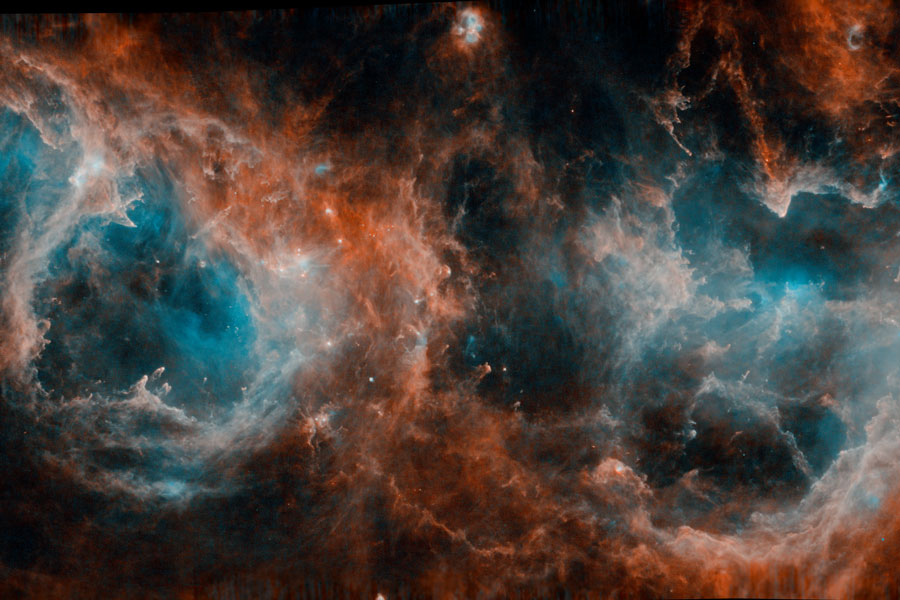Above:
Herschel Space Observatory’s image reveals great turmoil in the W3/W4/W5 complex of molecular clouds and star-forming regions. MDL-produced SIS mixers on Herschel HIFI discovered many terahertz spectral lines from molecules in interstellar space.
SIS Mixers
The Eyes of a Radio Telescope
Bruce Bumble - Rick Leduc - Pierre Echternach
Submillimeter heterodyne spectroscopy has proven to be an incredibly powerful technique in determining local chemical, physical and dynamical processes remotely imaged by ground based and space based radio telescopes. MDL has provided niobium (Nb) based Superconductor-Insulator-Superconductor (SIS) mixers with near quantum-limited sensitivity at various wavelengths as sensors in radio telescopes for over three decades.
Determination of how Earth got its water is both fascinating and scientifically important. MDL has recently proposed a space telescope with SIS mixers for measuring spectral lines of H2O and HDO, aimed at testing the hypothesis that water on earth was deposited by cometary bodies.
SIS junction on 6 um silicon-on-insulator (SOI) in a 600 GHz mixer block with ~2 mm length. The design utilizes a unique capacitive RF grounding technique. The IF and bias comes from the right, with the dc current return via a wire bond connection between the block and one (or both) of the capacitive pads.
+ Larger image


